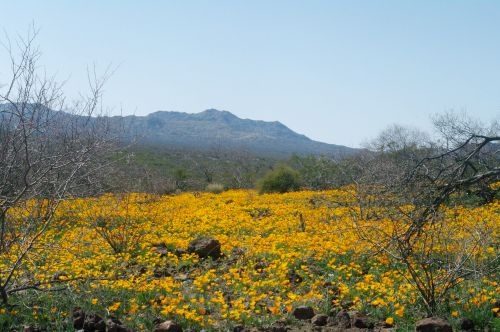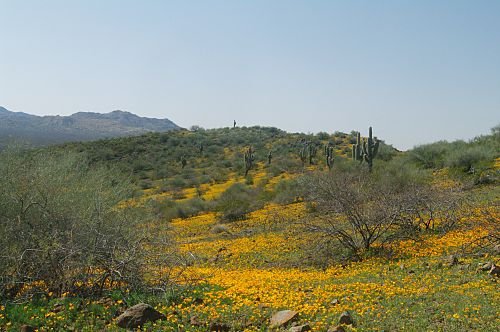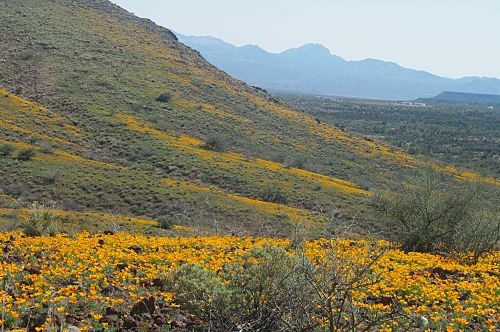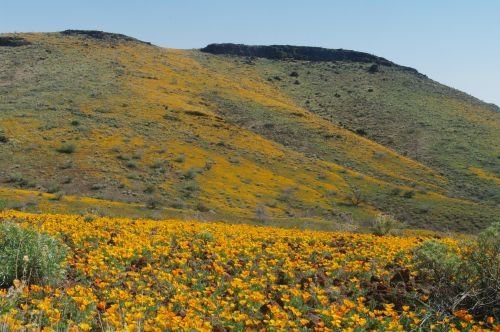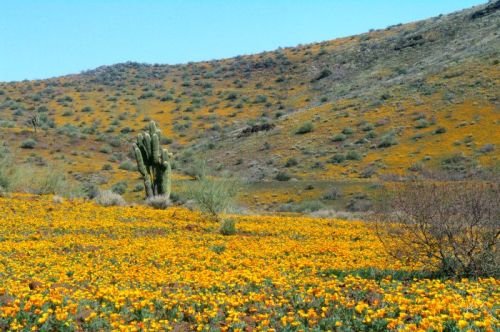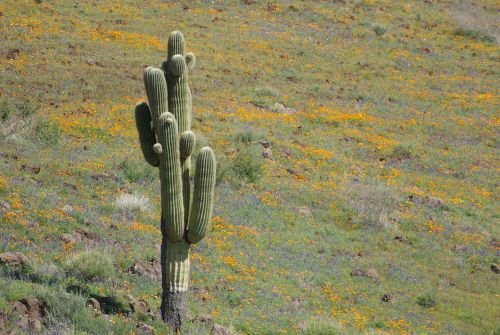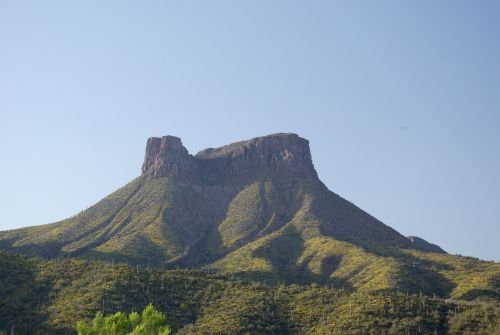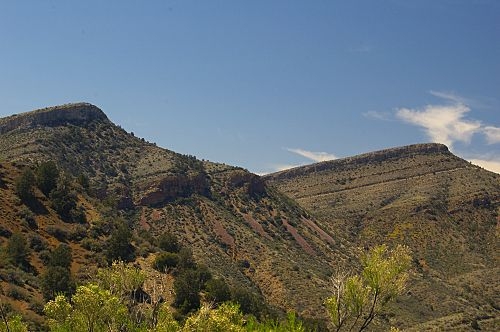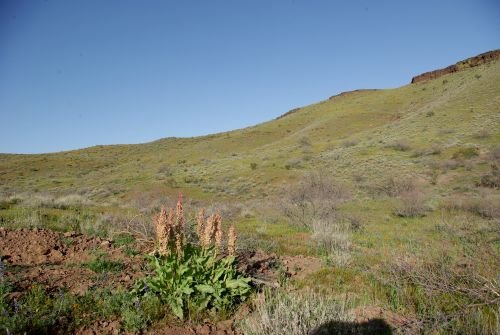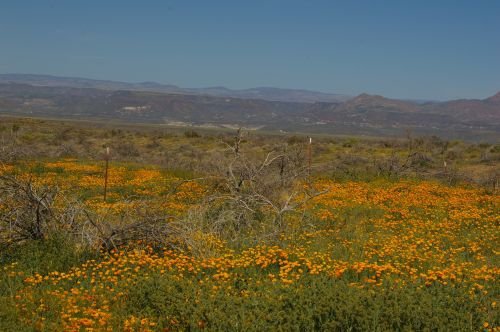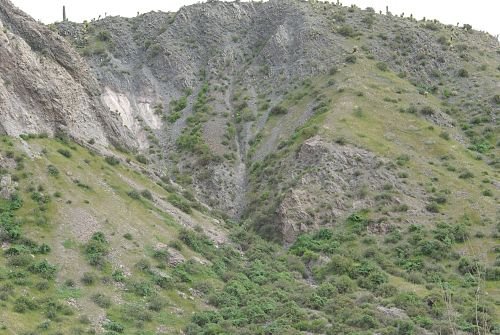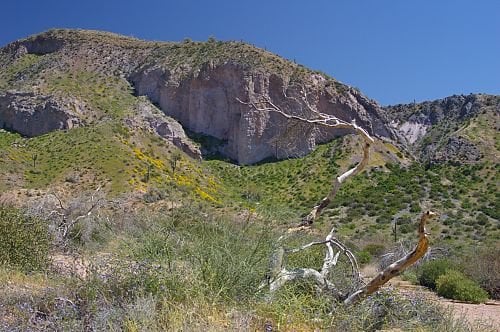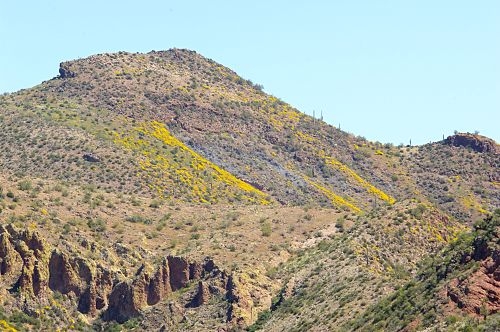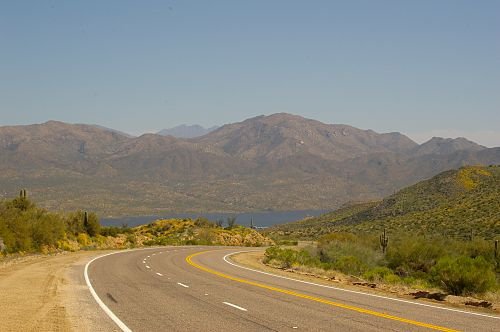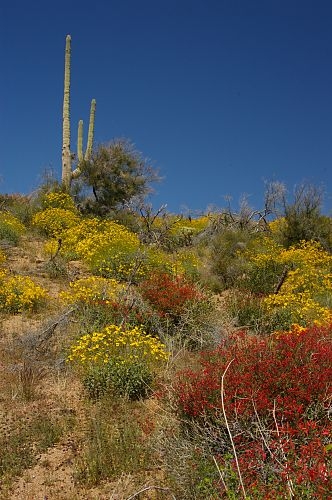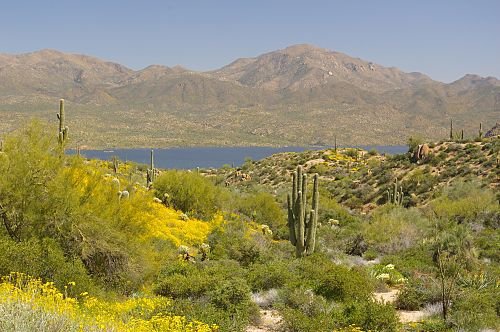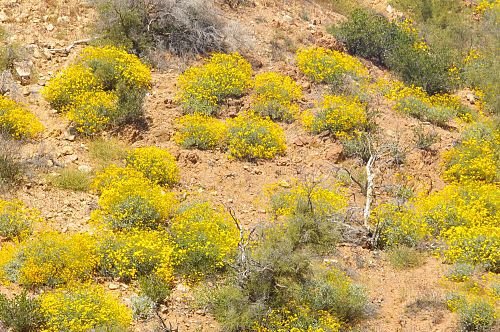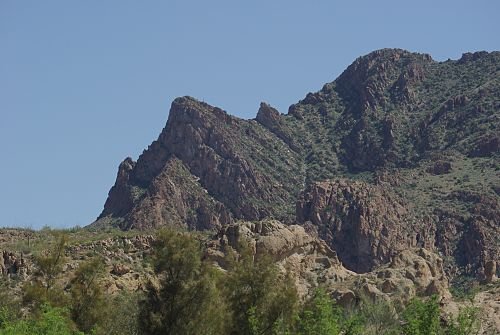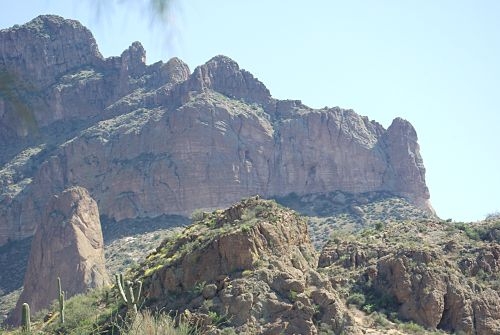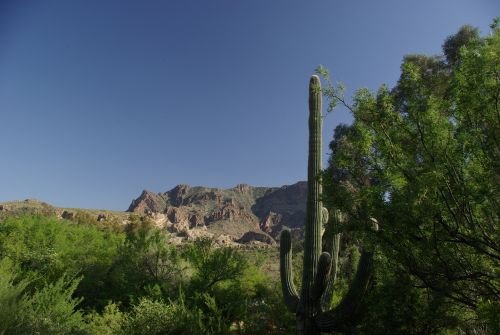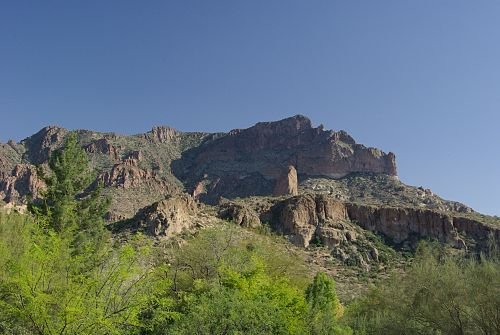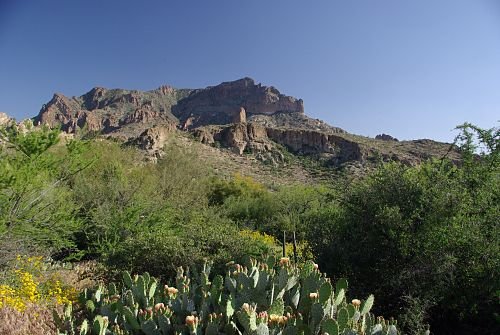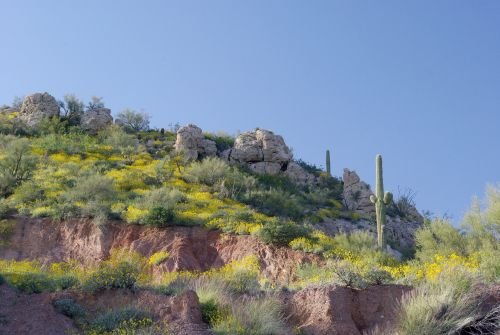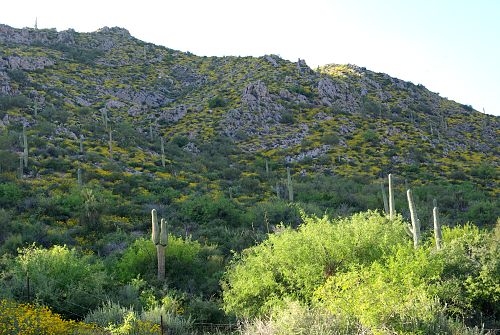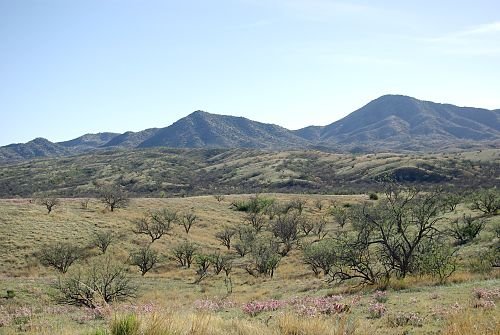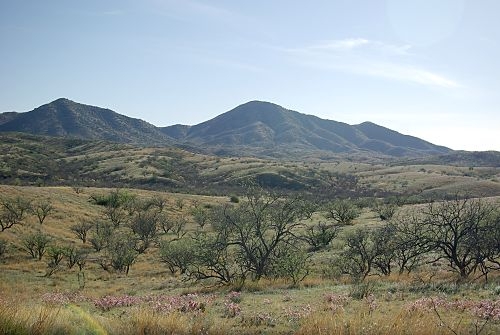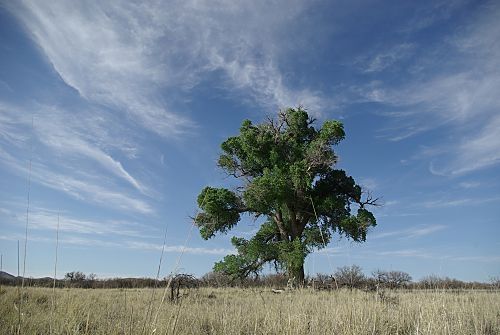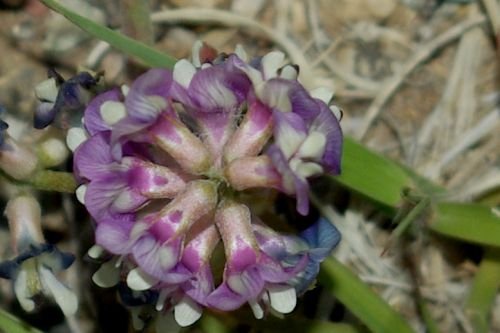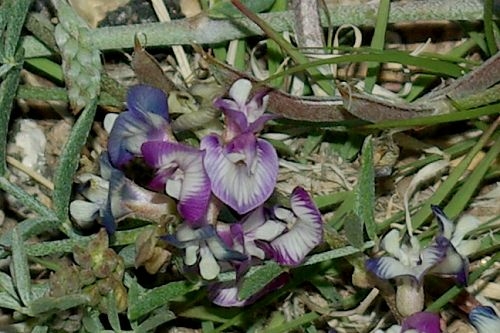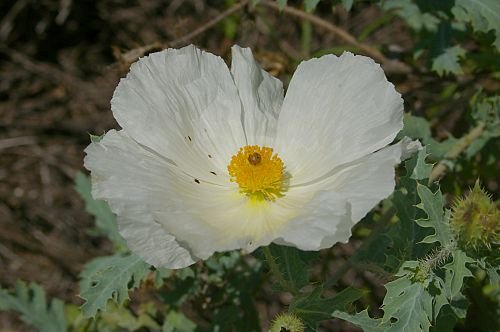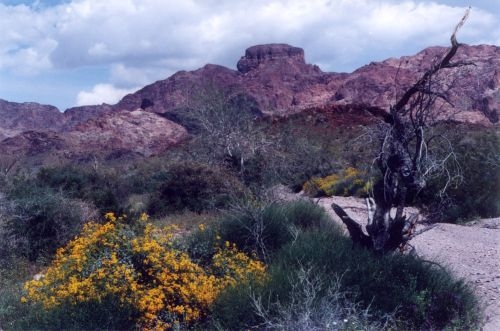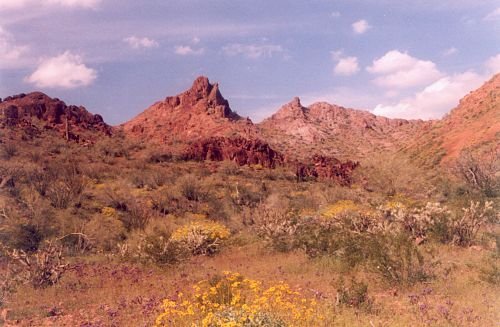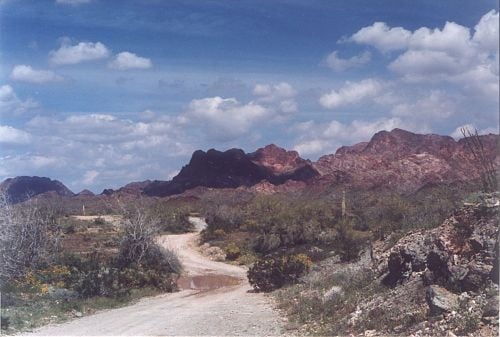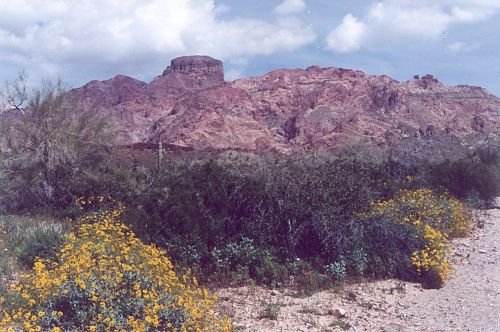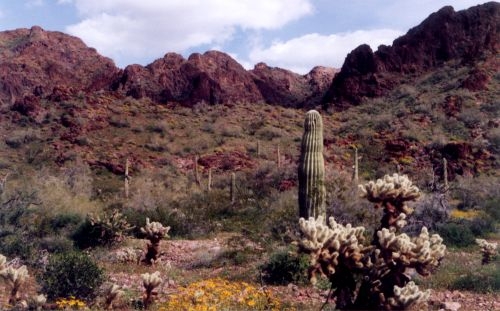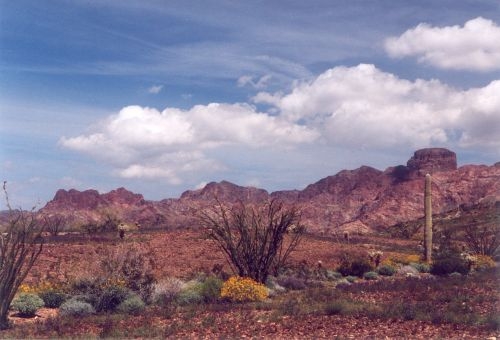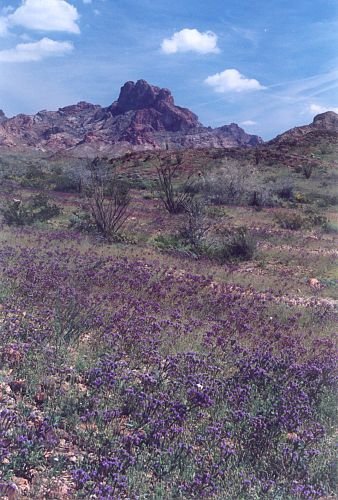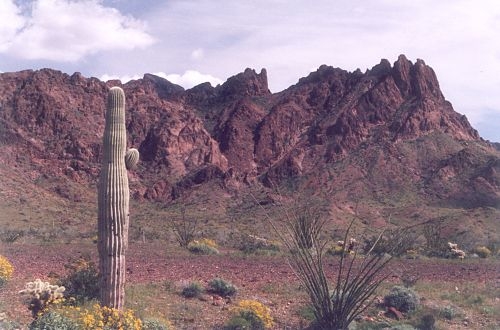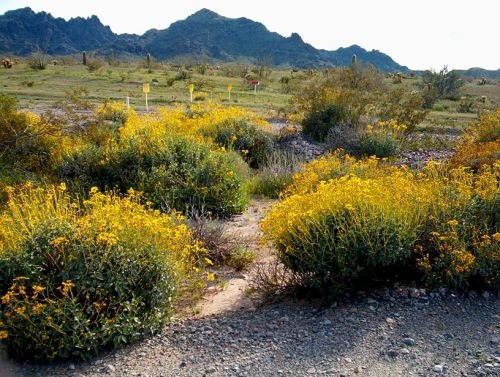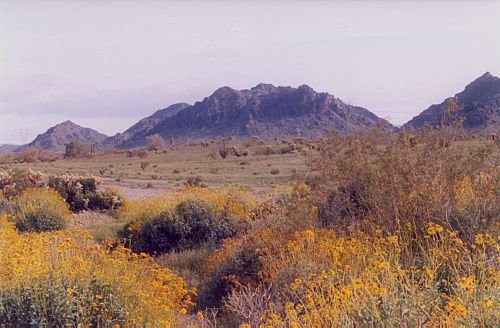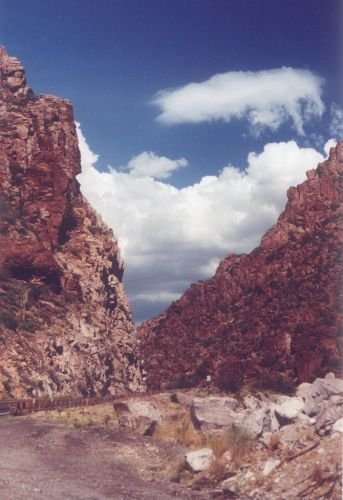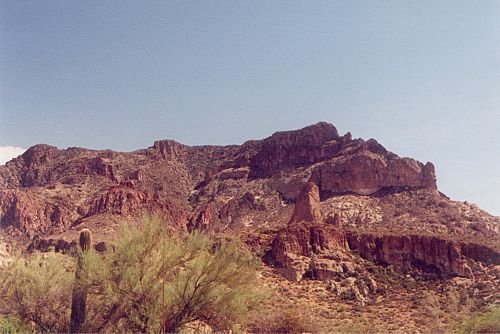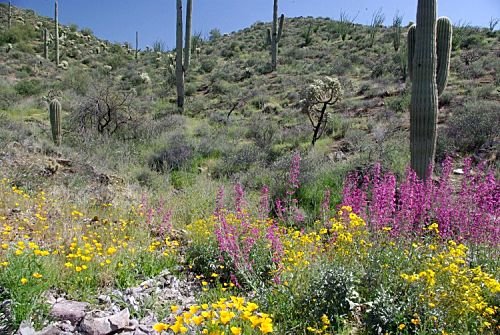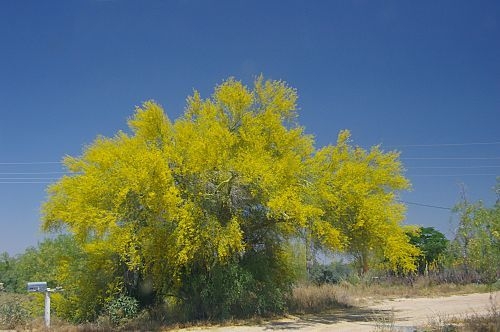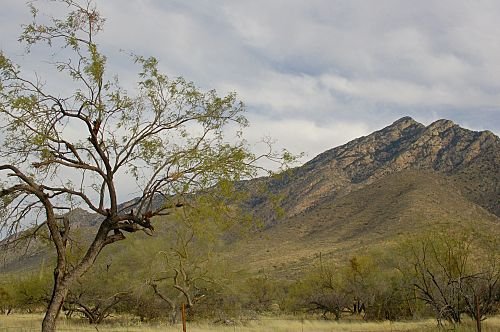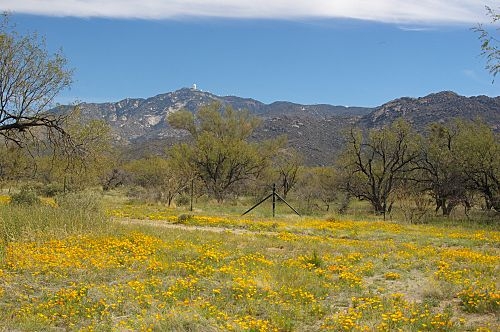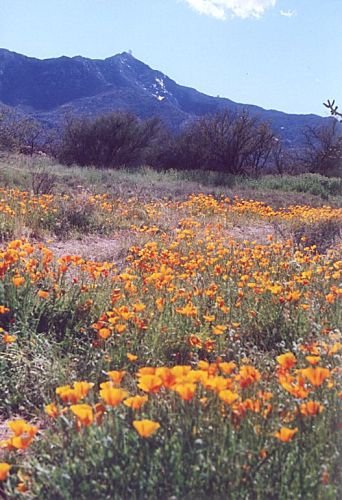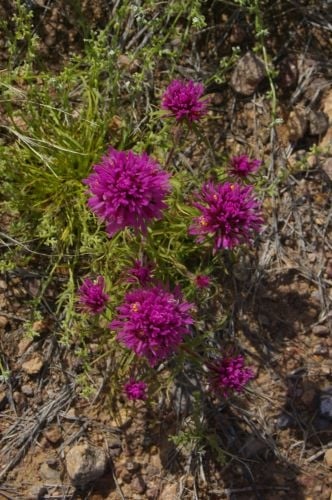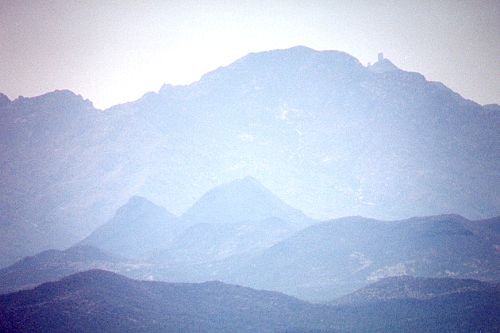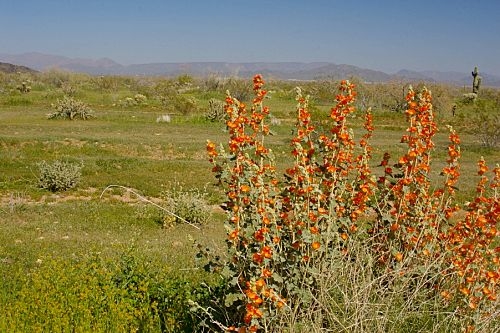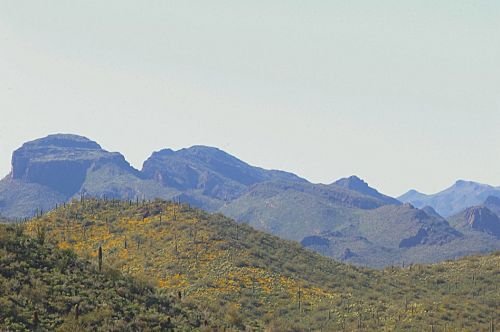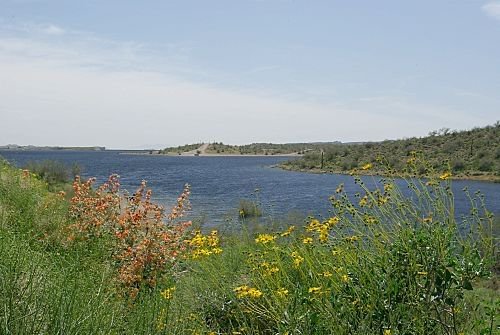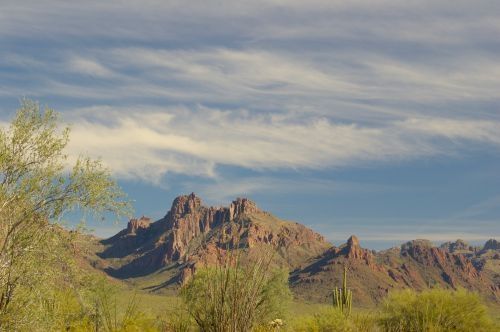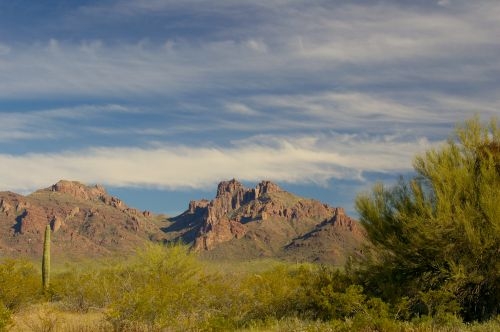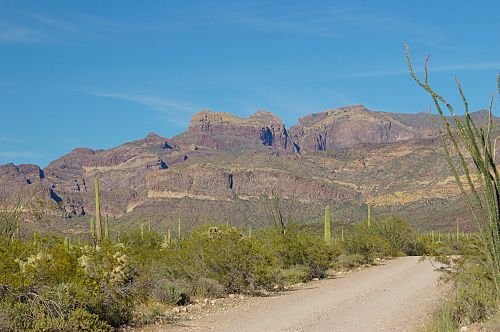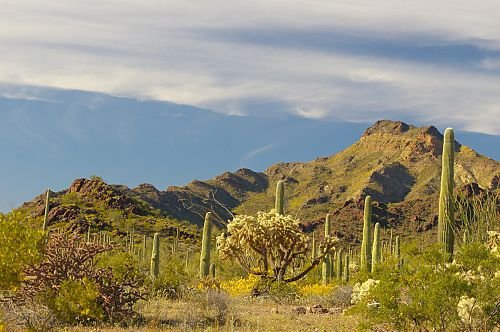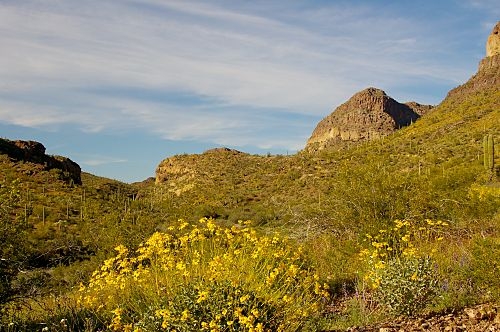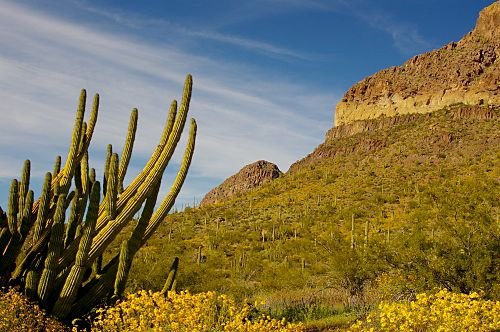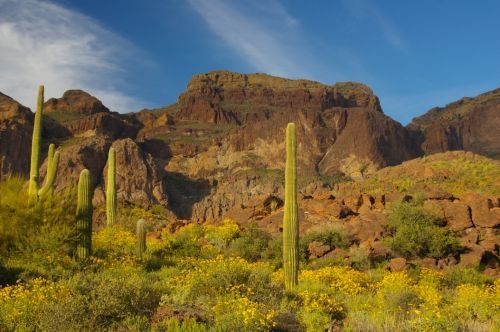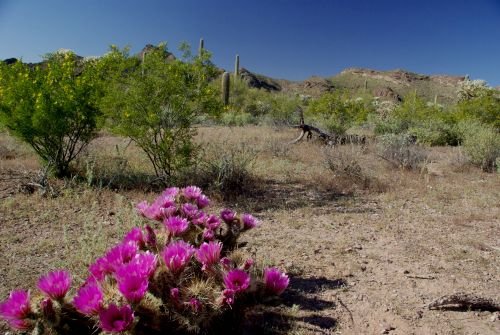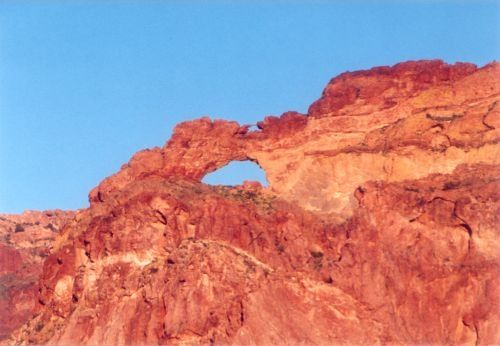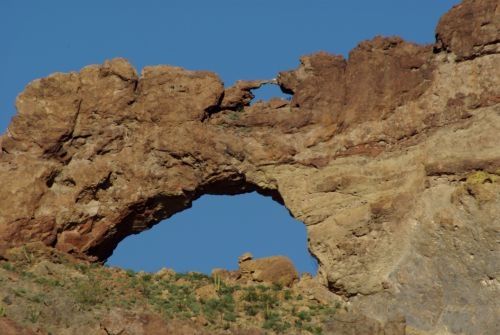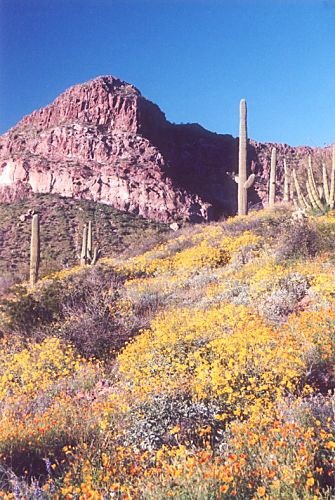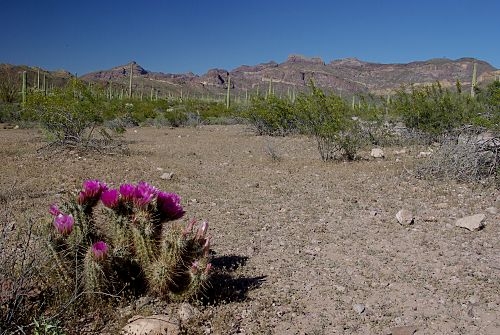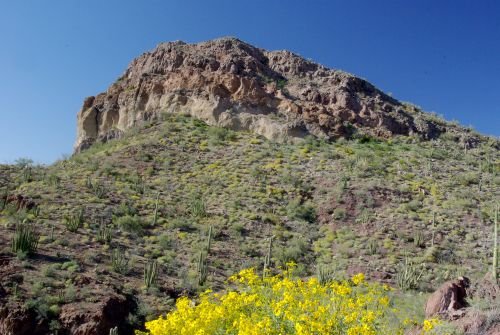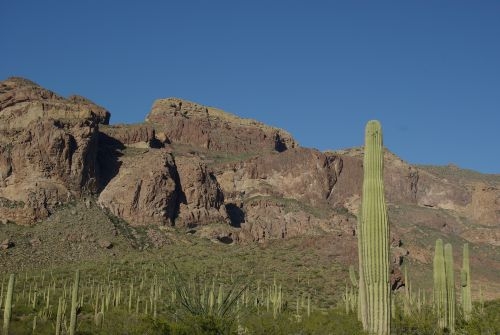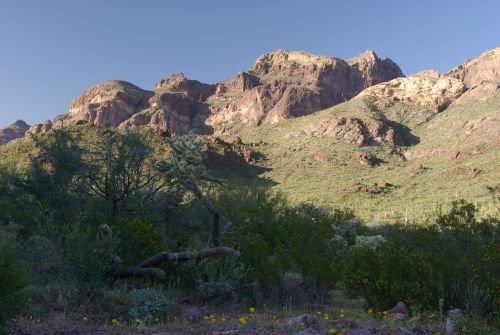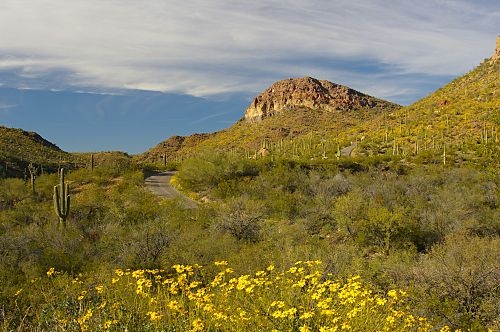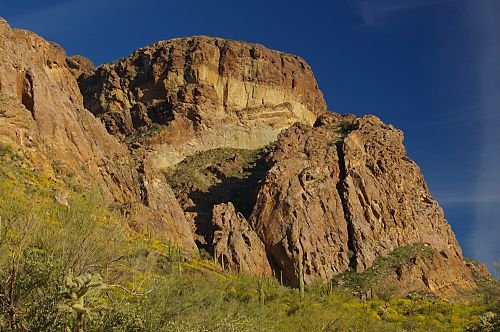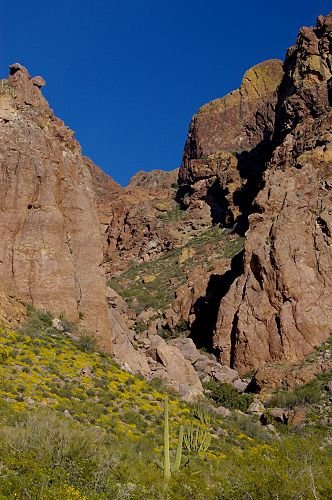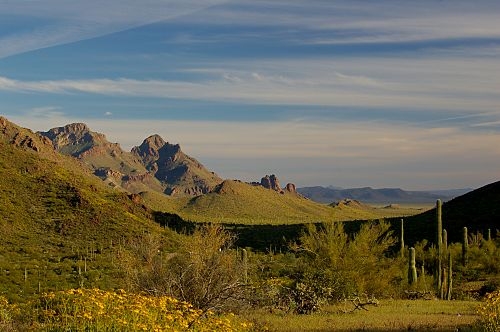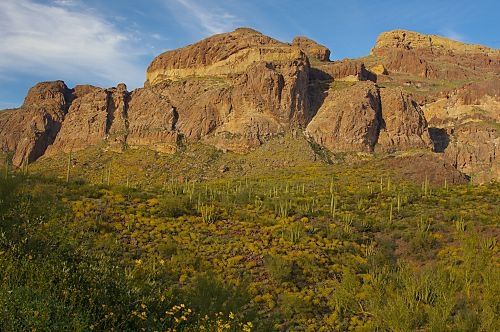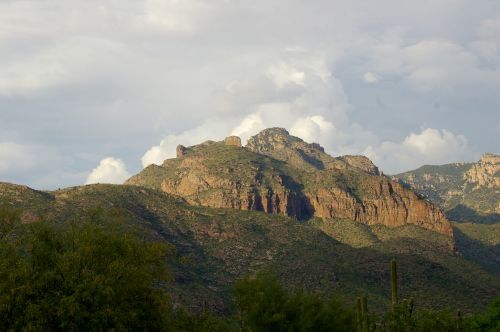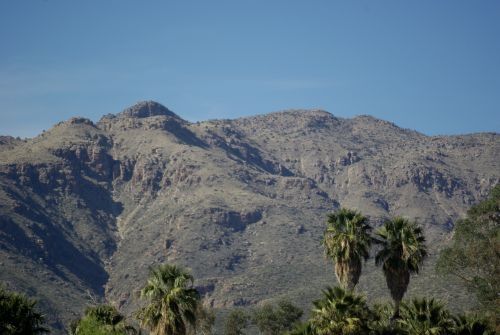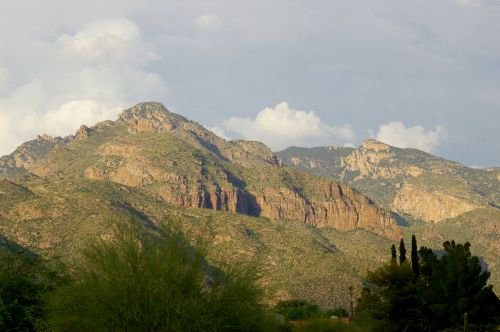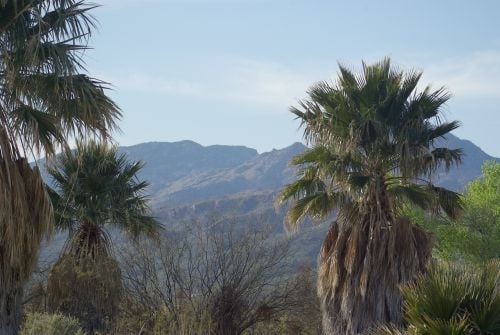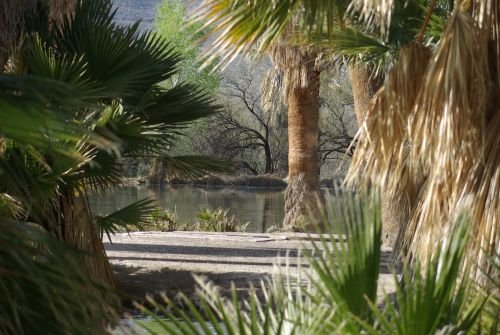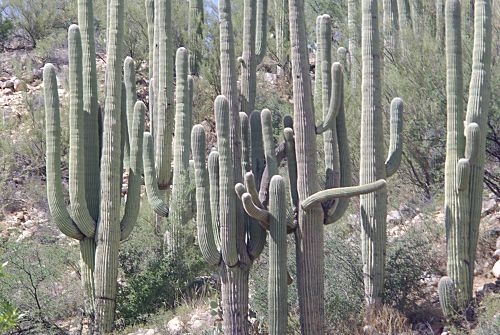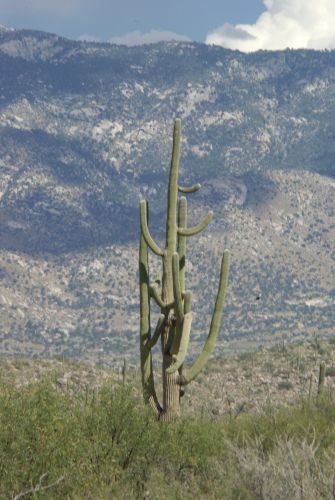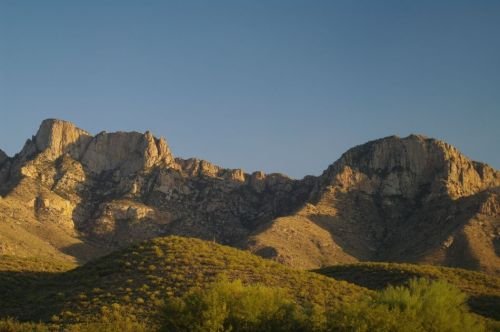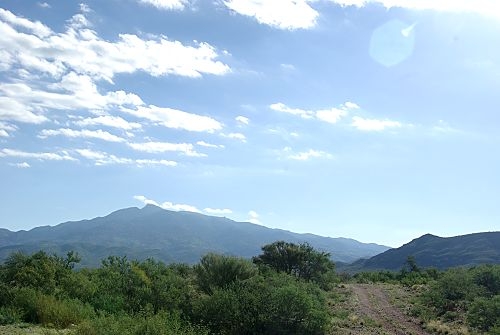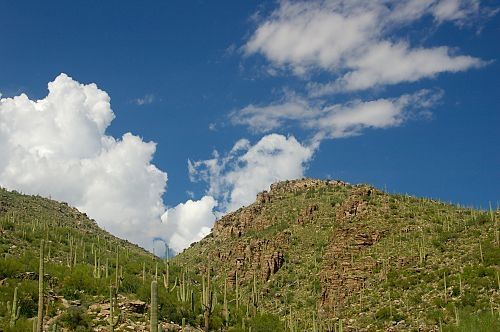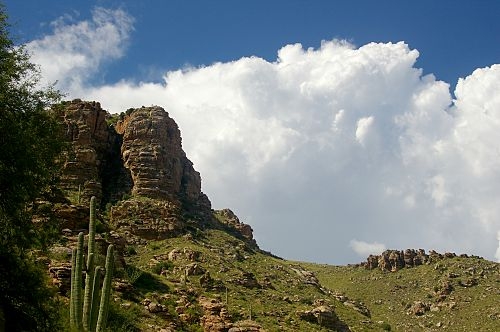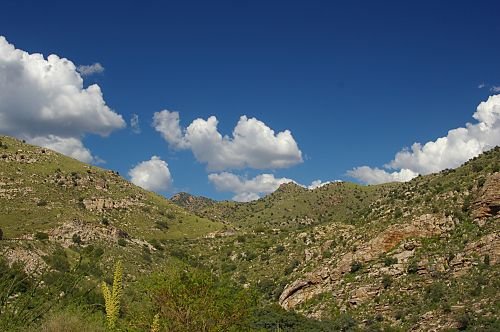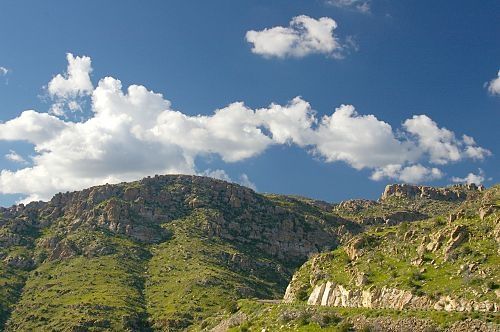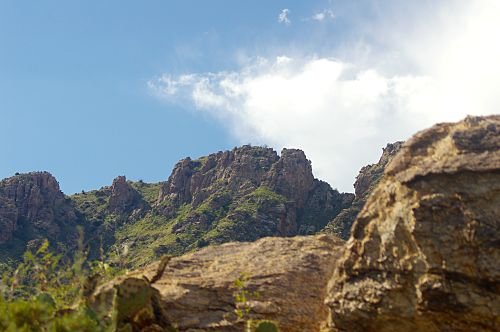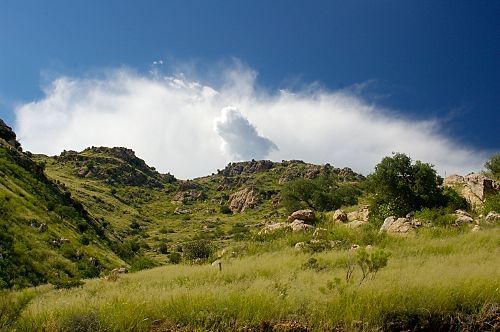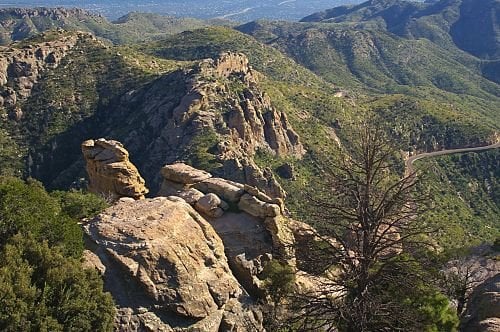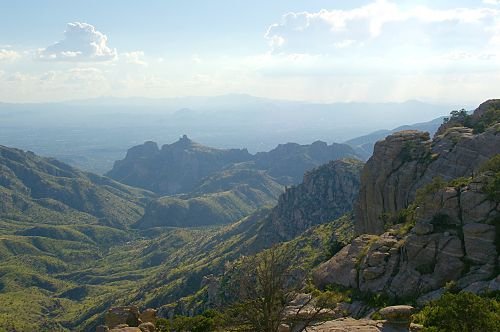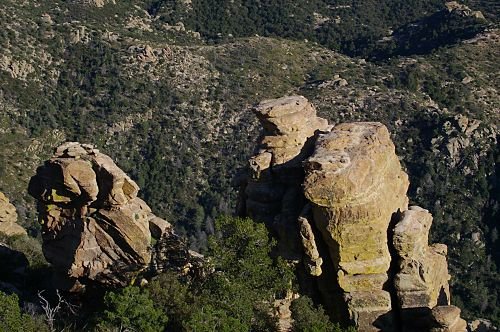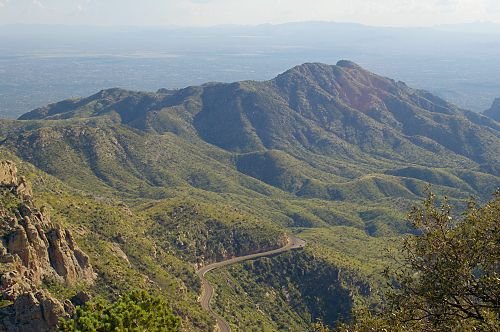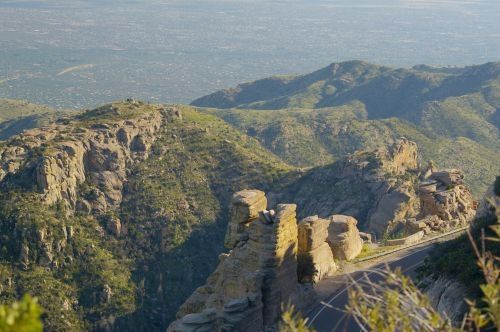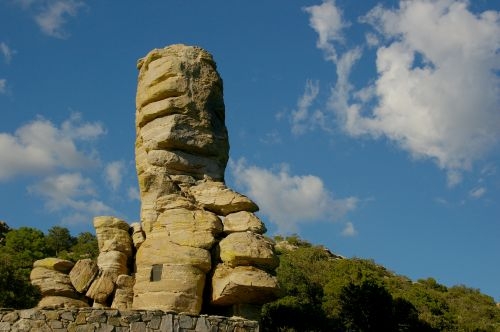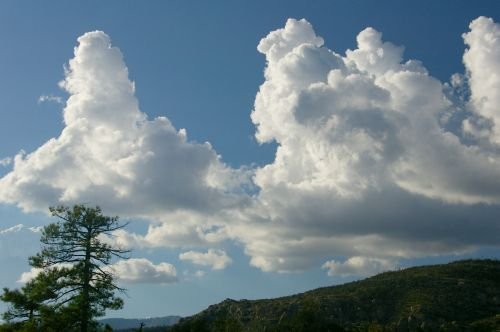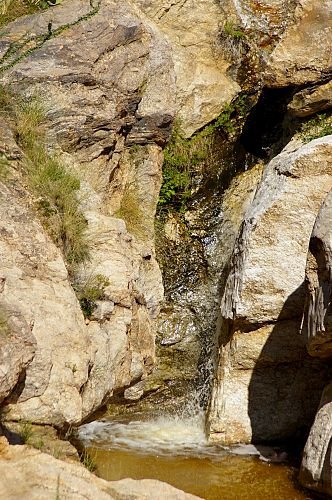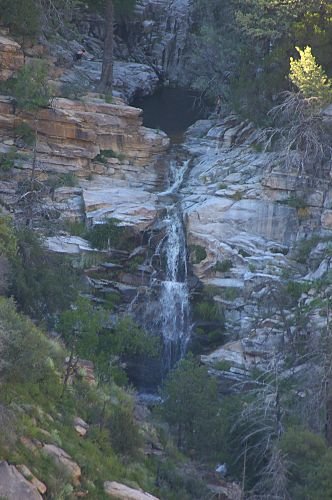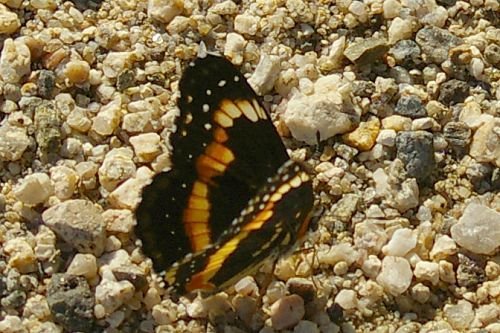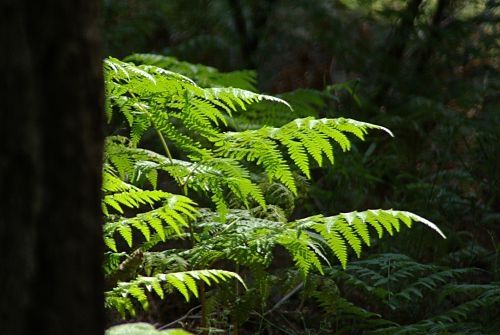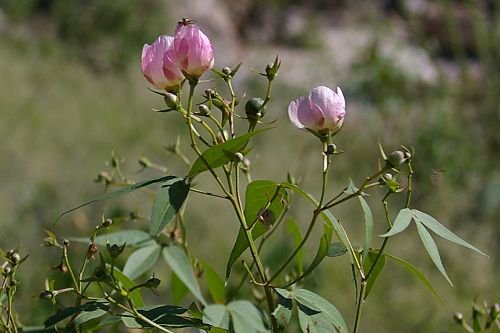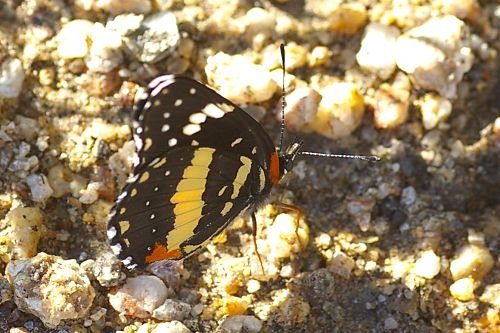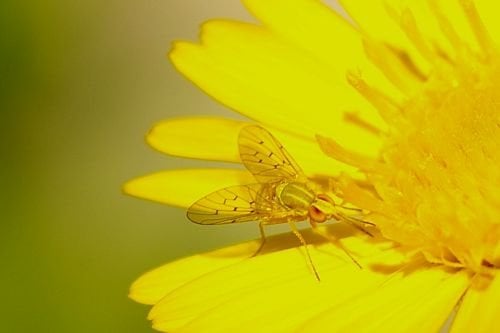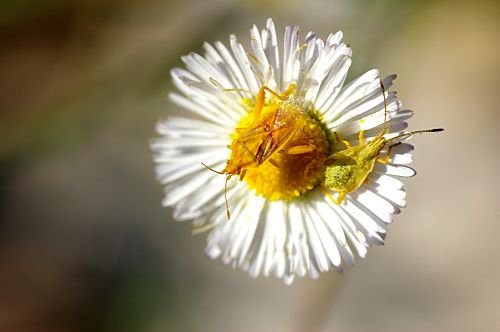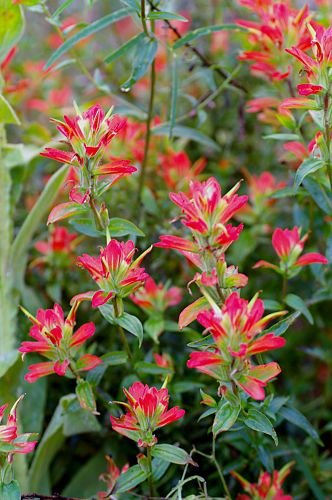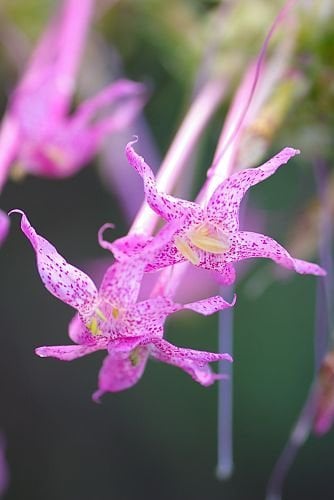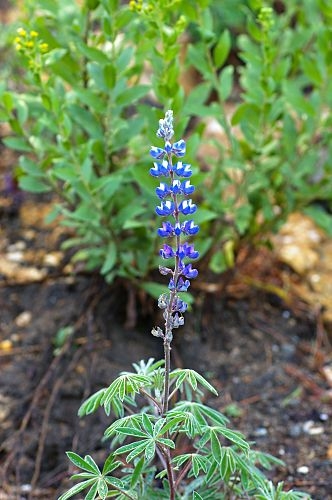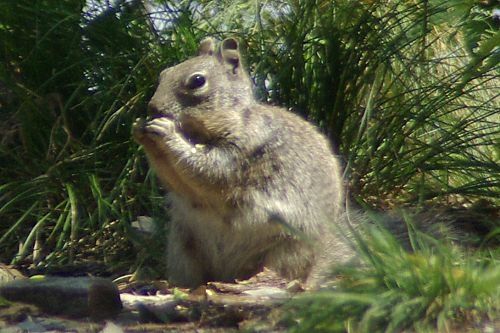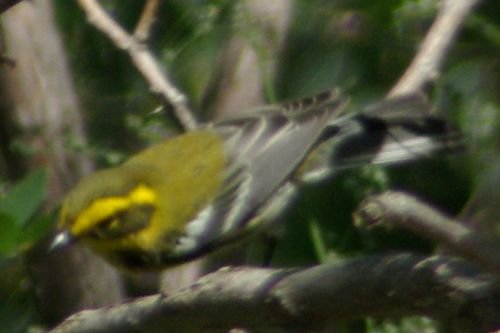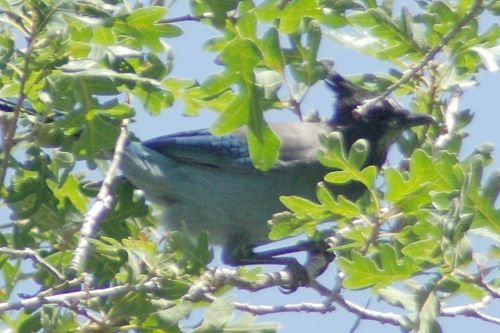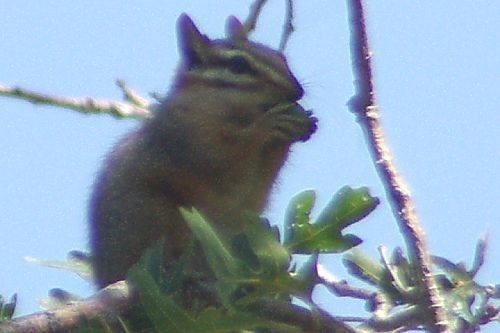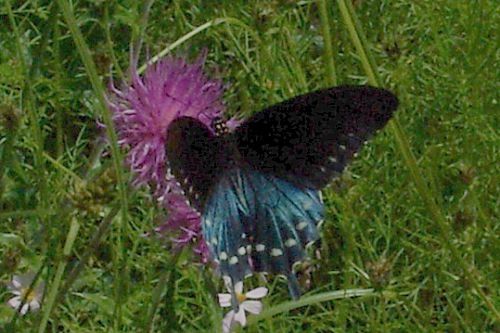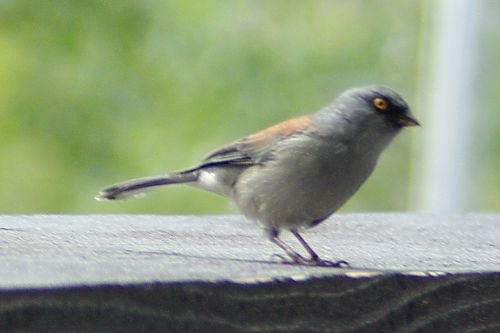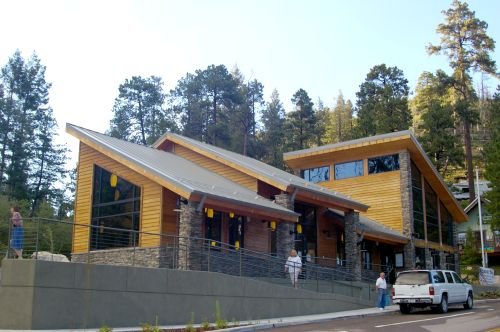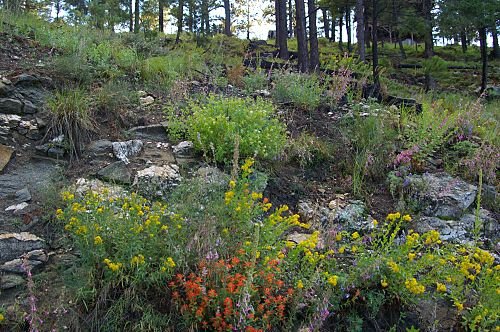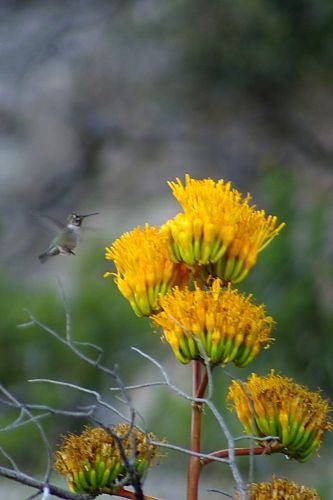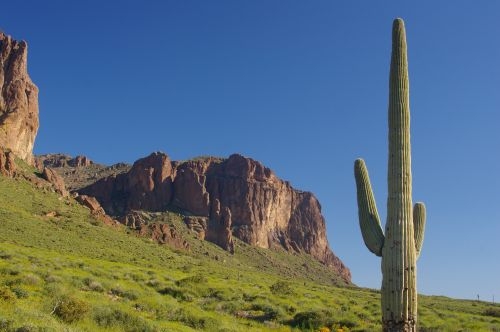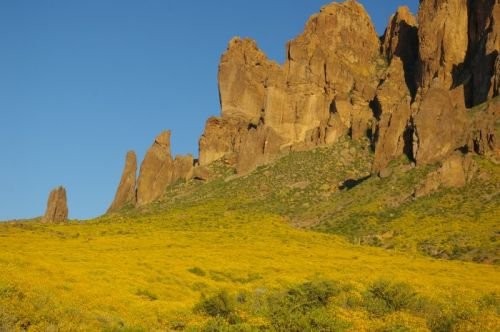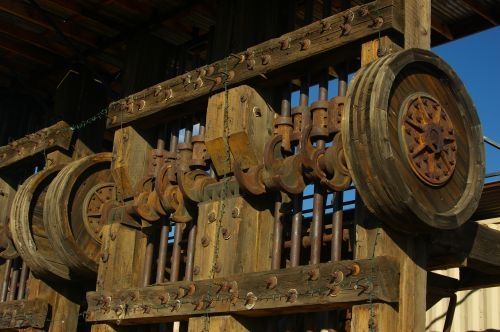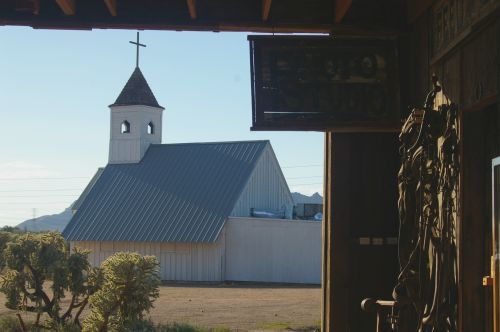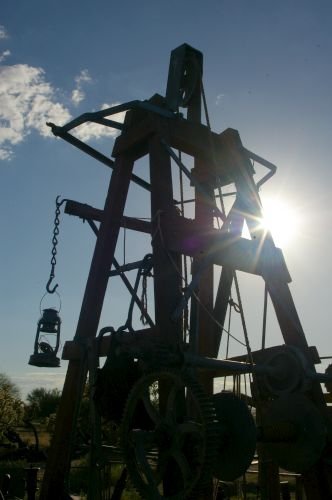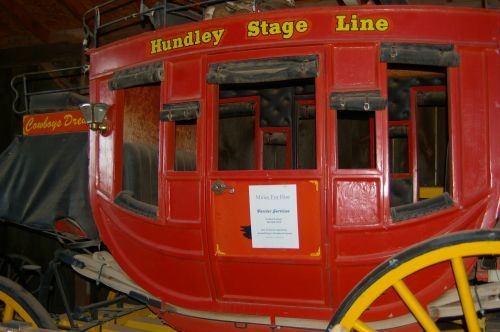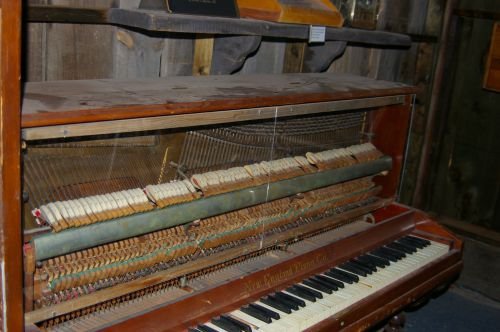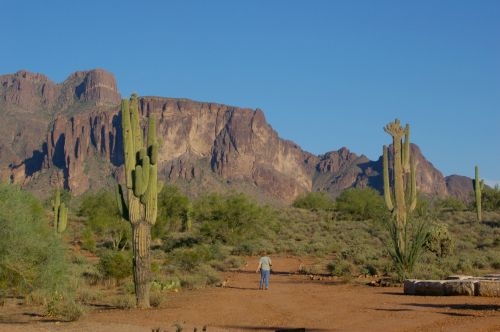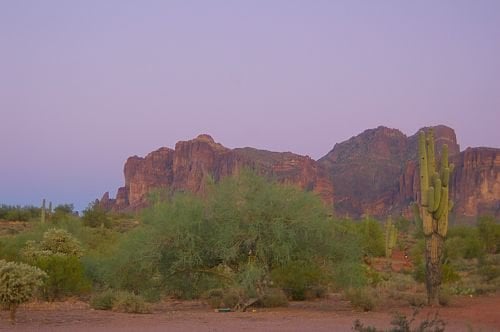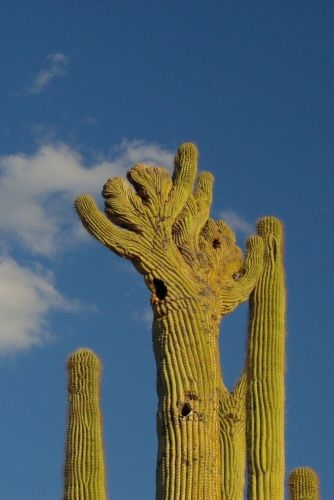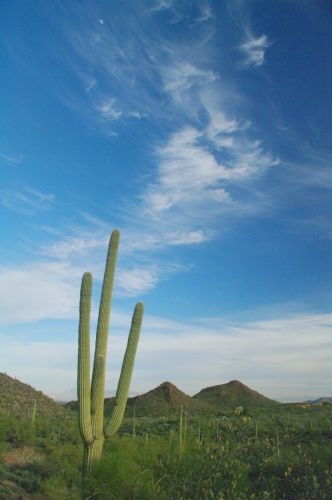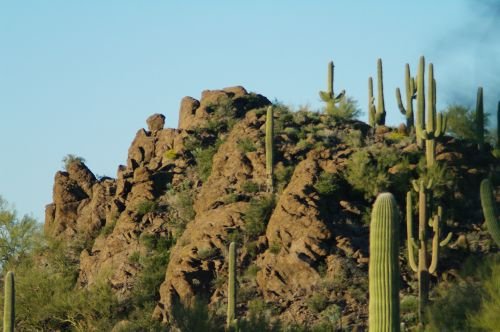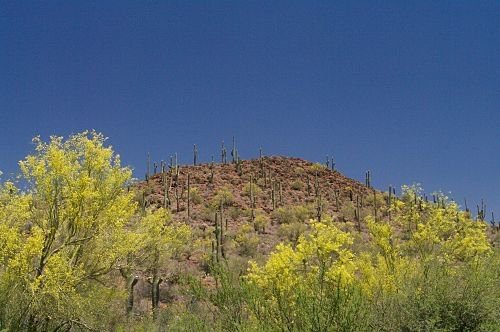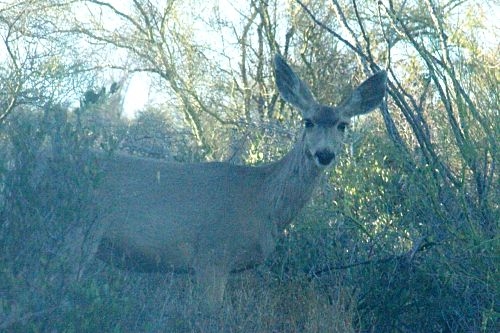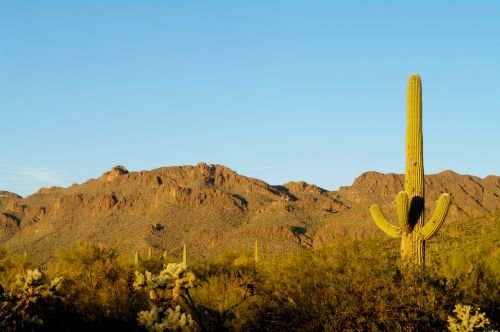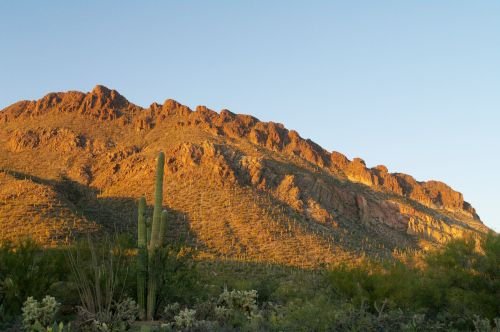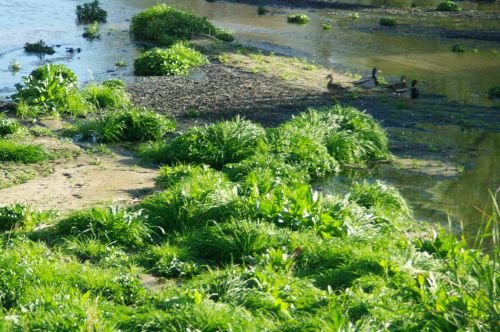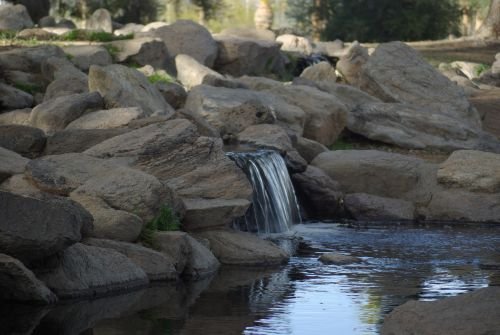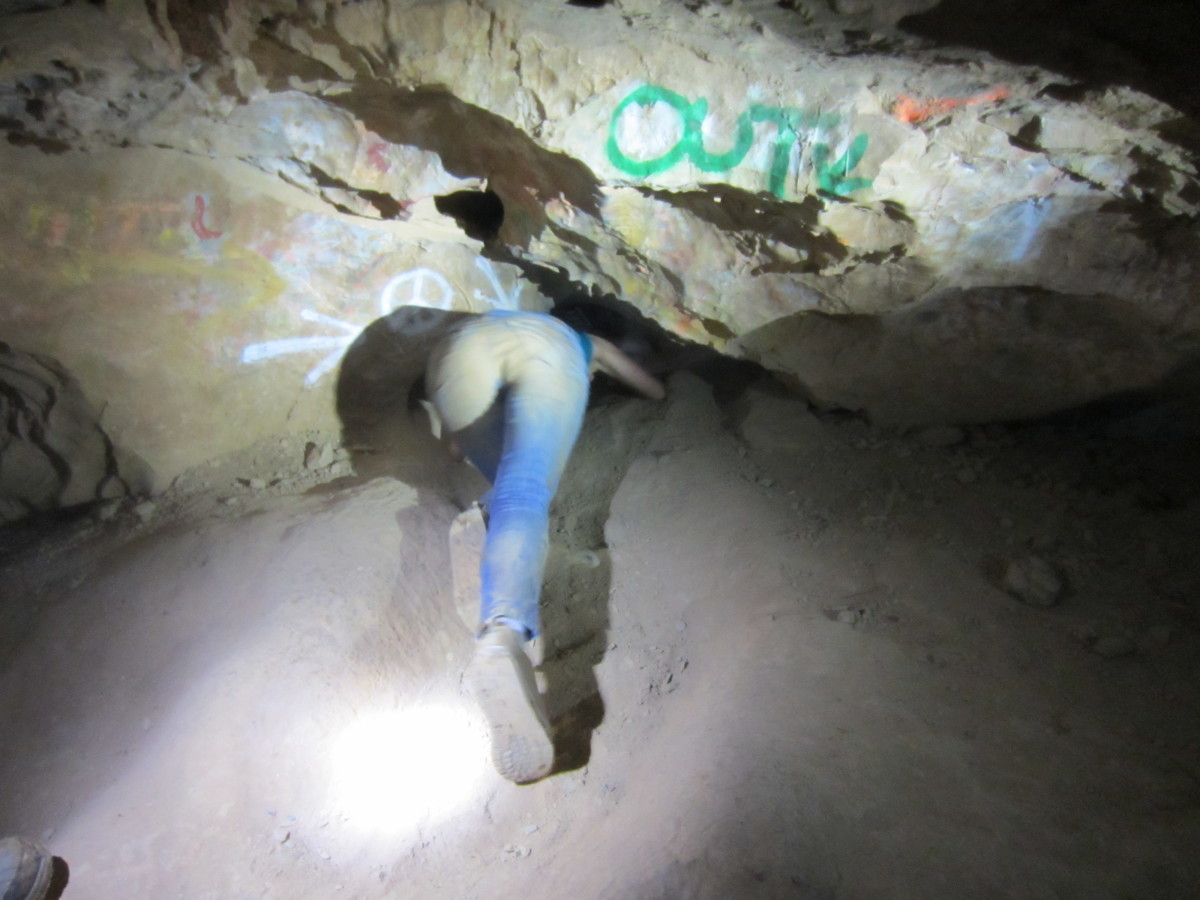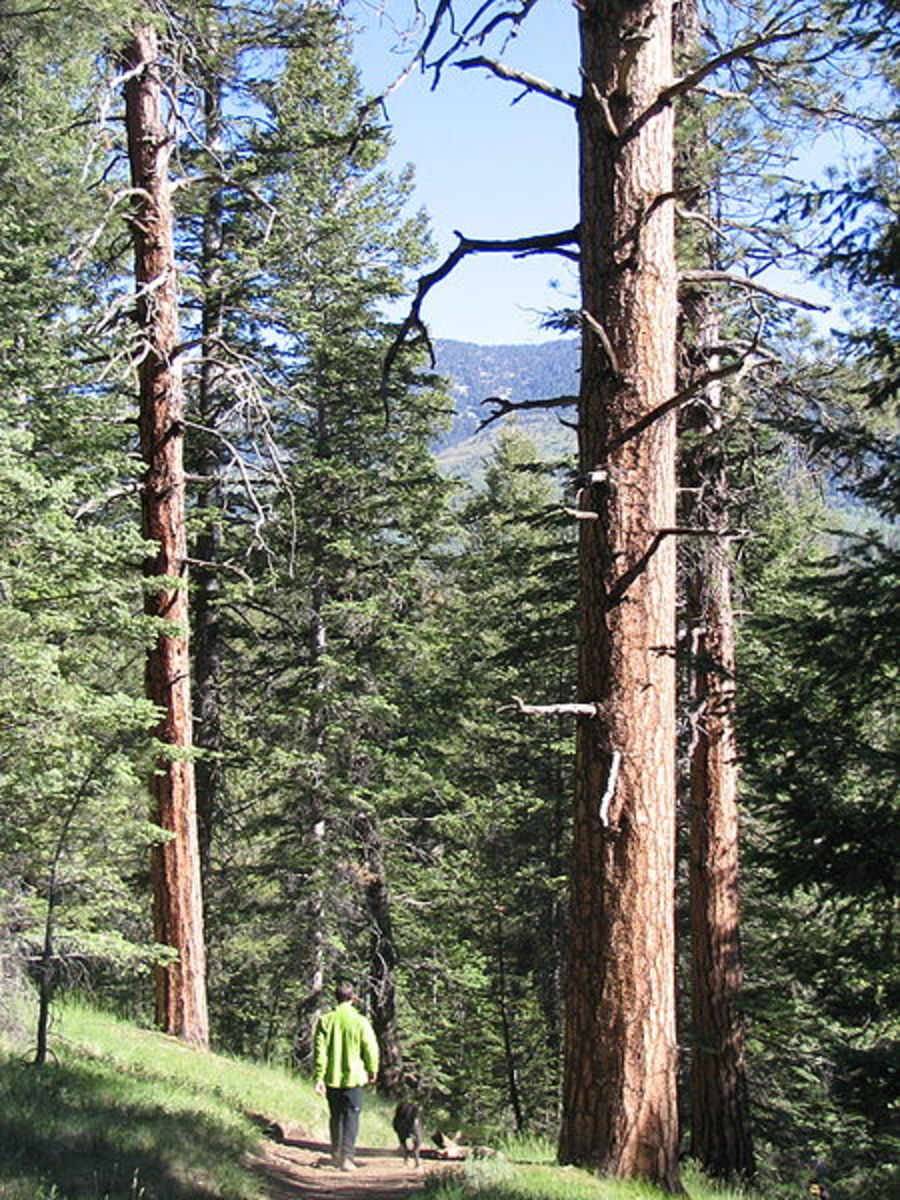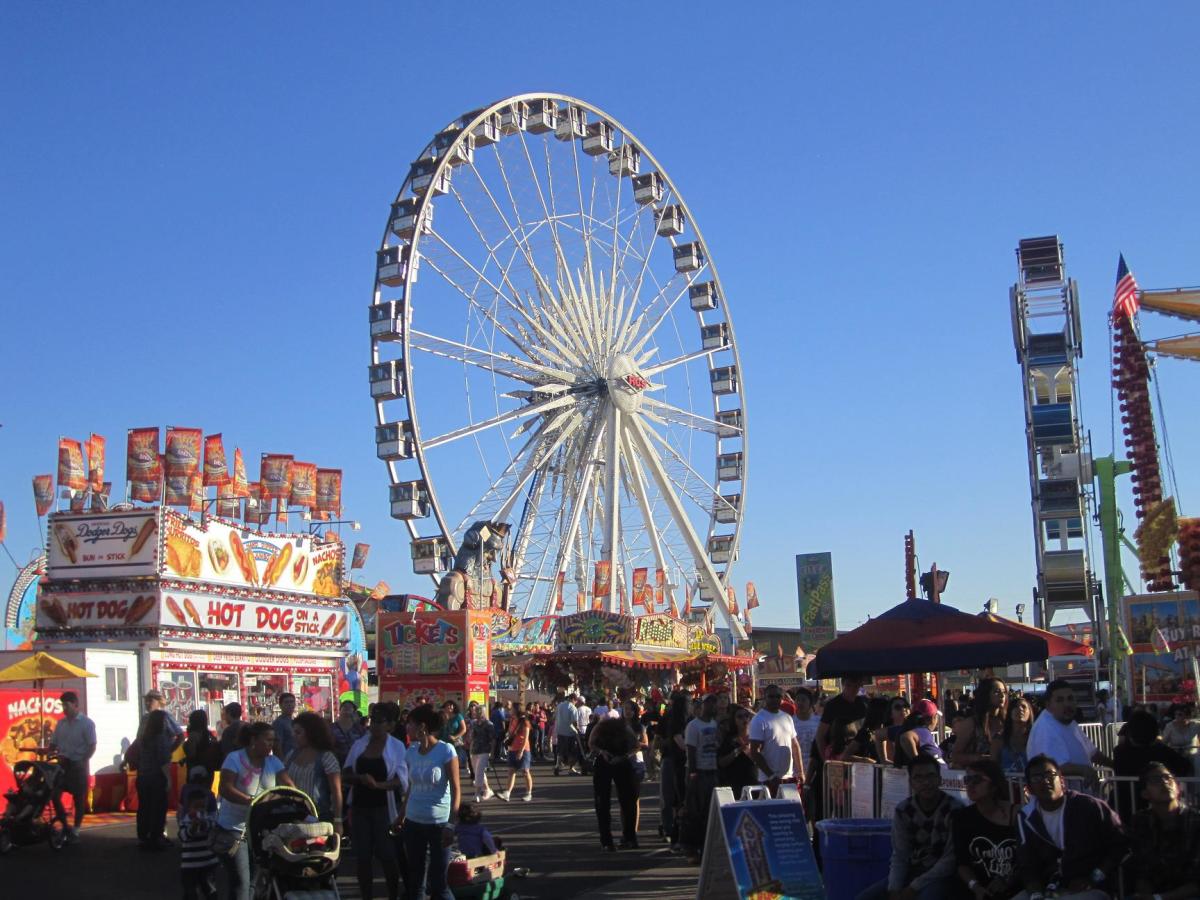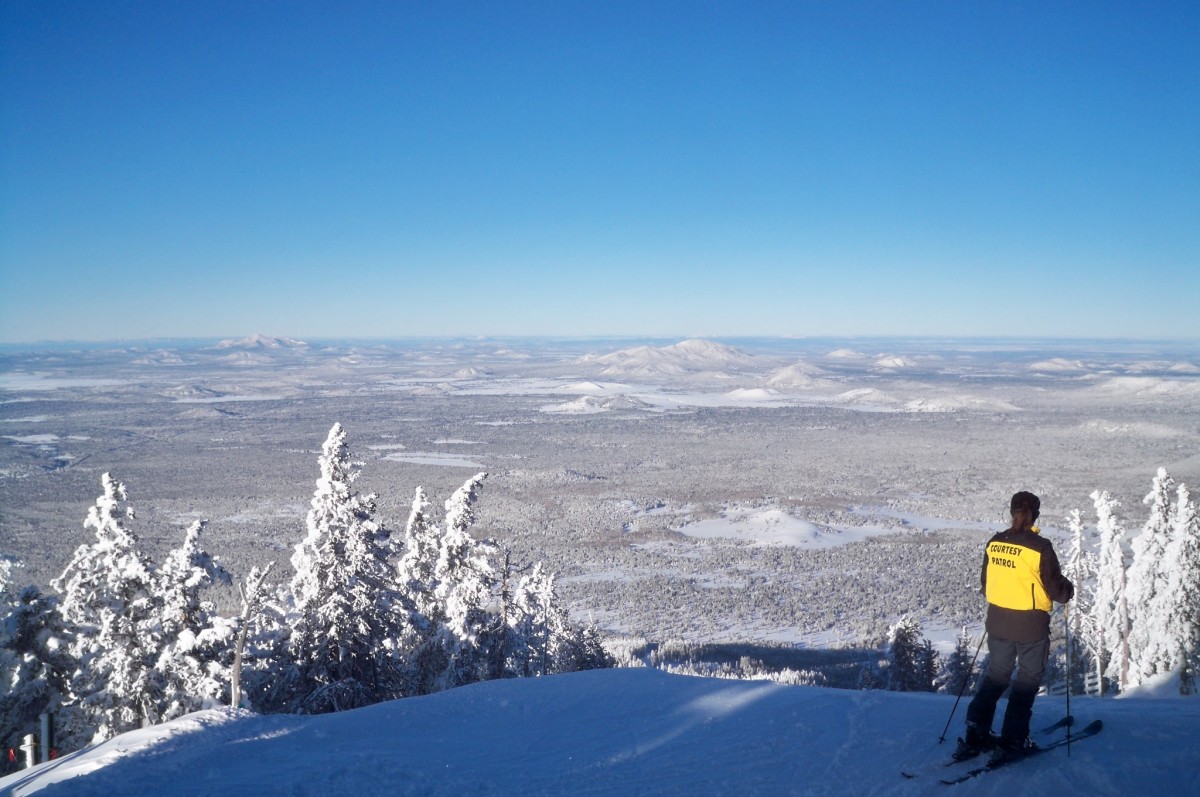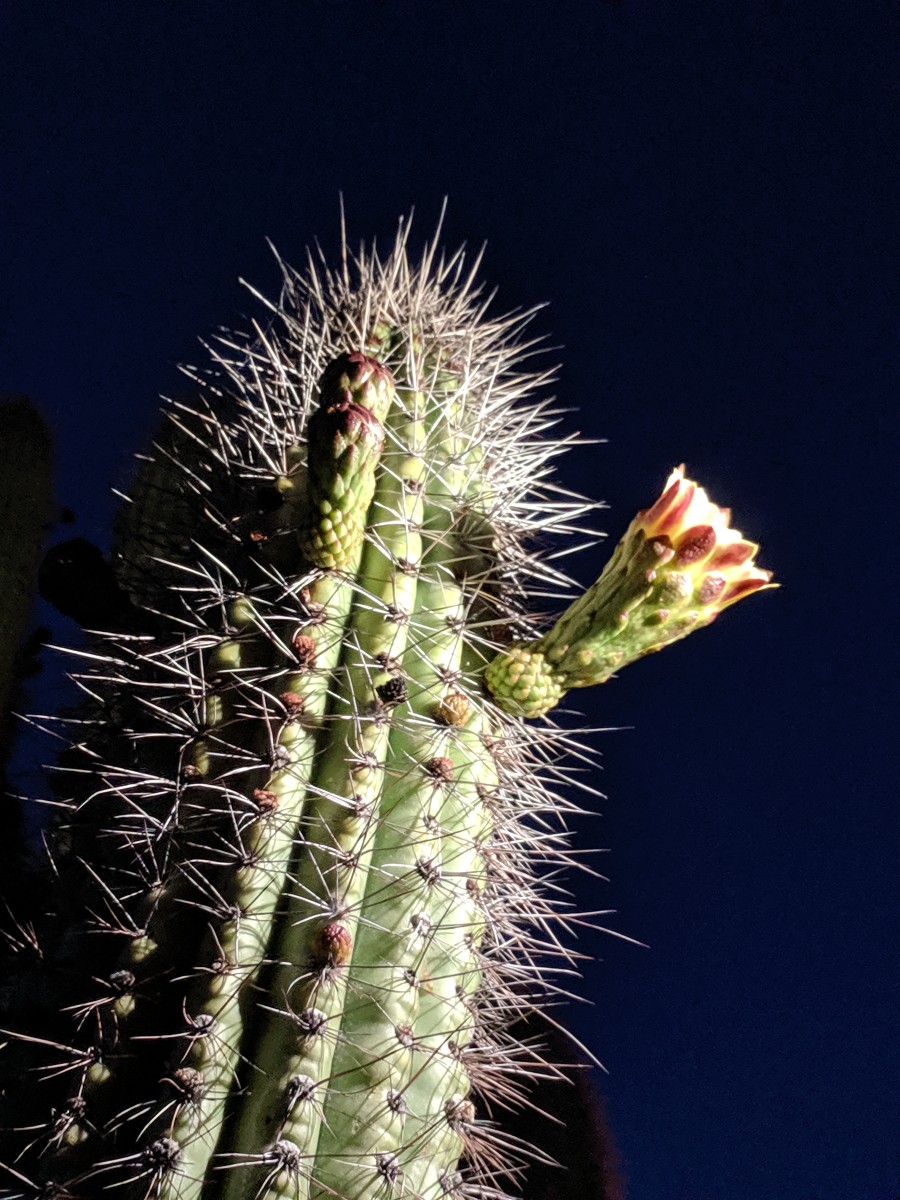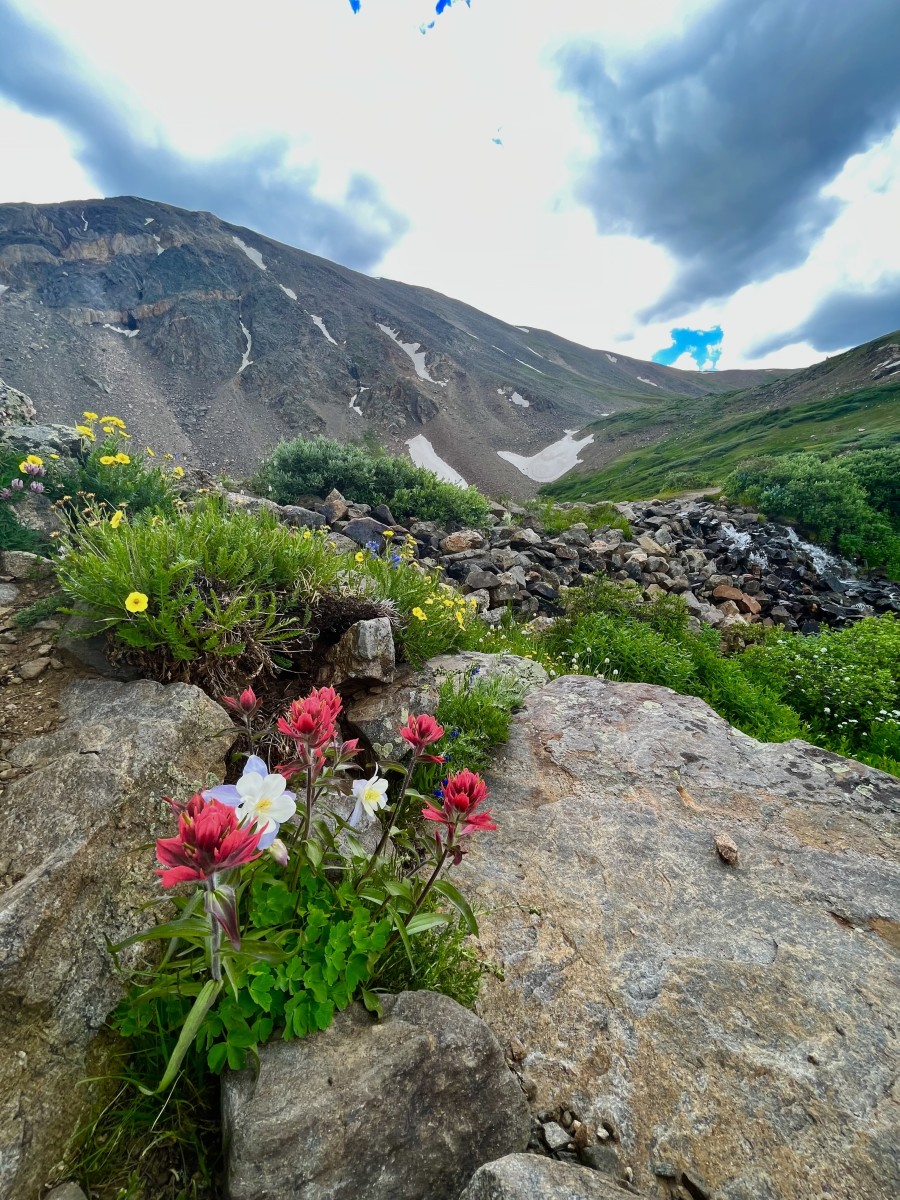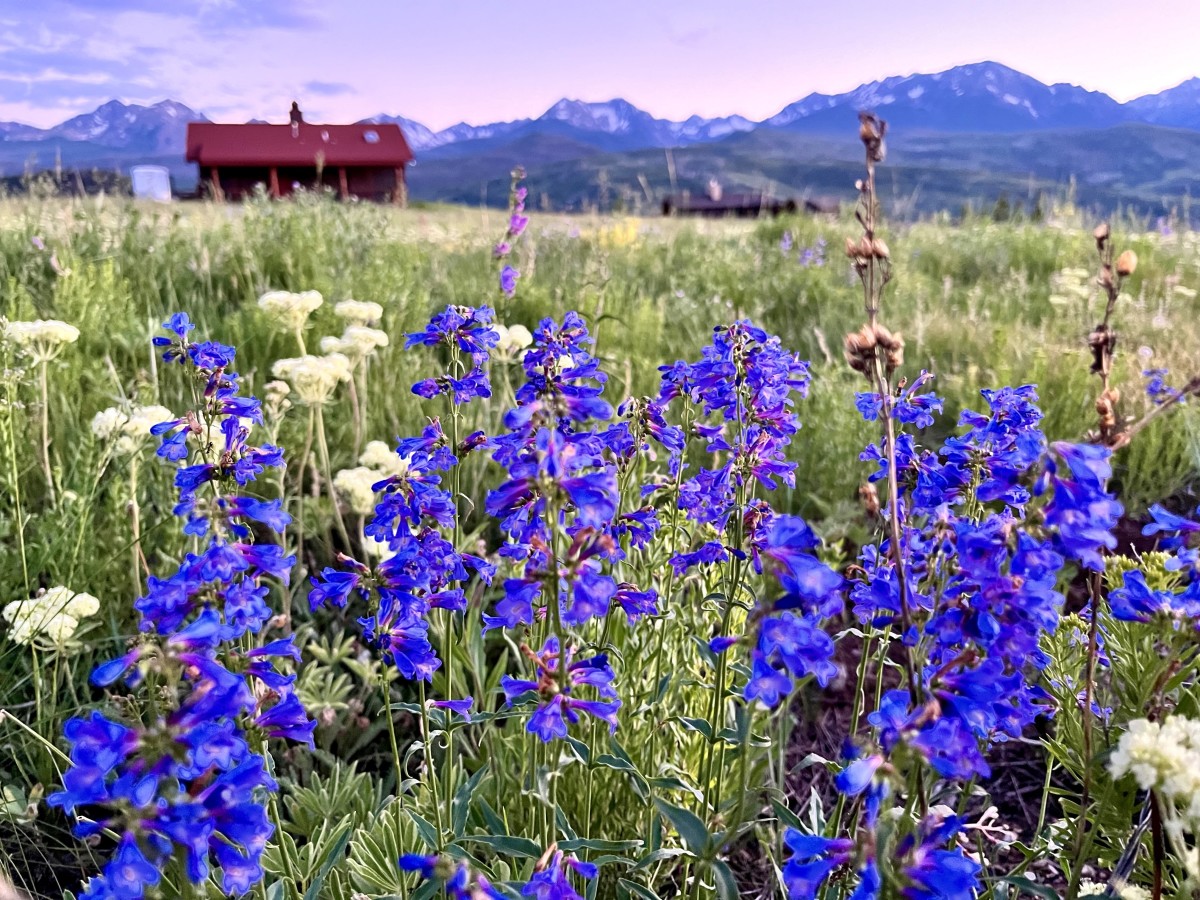The Beauty of Southern Arizona
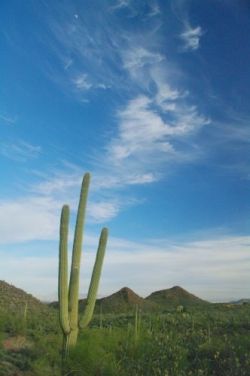
Southern Arizona
In this lens, I will share my travels and pictures from the southern half of Arizona, including all the places I do not write about someplace else.
Southern Arizona is quite scenic, though the best is yet to come in other parts of Arizona and Utah.
Included is not only the scenery, but also some of the plants and animals, particularly birds. There will be information on some of the best birding spots.
I will be adding to this lens for awhile. I have many more photographs, and they can show up any place. So please come back!
Peridot Mesa
Located on the Apache Reservation, in the middle of nowhere, Peridot Mesa is a unique volcanic formation. The slopes and location of the mesa, and the soil, lend themselves to huge stands of California Poppies in the spring after good winter rains. The rain runs down the slope, watering the annuals, and they spring to life. While there are California Poppies throughout the area during this time, they are not all that abundant elsewhere. Peridot Mesa is known for its poppy display, which can turn the entire side of the hill bright orange.
Peridots are semi-precious stones which are translucent and a beautiful light green in color. They can be faceted. They are abundant in the area. When I was a teenager, our youth group went to worship in the Lutheran church in San Carlos, and afterwards, the people served us fry bread, which was delicious. One person gave me a small bottle half full of peridots. I still have it.
For more information about Peridot Mesa, read here: Peridot Mesa.
Apache Reservation - Peridot Mesa
Click thumbnail to view full-size









Bartlett Lake
Bartlett Lake is a recreational area northeast of Phoenix. It allows boating and has a marina. It's a beautiful drive, and has some interesting wildflowers in spring.
Bartlett Lake - NE of Phoenix
Click thumbnail to view full-size






Boyce-Thompson Arboretum
Located just west of Superior, Boyce-Thompson Arboretum is a huge botanical garden. It has a gorgeous small set of mountains directly behind it. I imagine this is what they used to feed Ayer Lake, which is, in turn, used to water the plants in the garden. There are extensive areas with trees, and with desert vegetation. Several locations are great for observing hummingbirds; they keep feeders active during hummingbird season. Flowers also feed the hummingbirds, when in bloom. A demonstration garden of plants which are typically planted for their flowers is located in one place. The most prominent feature of this area is the small collection of Irises. There is also a nice cactus garden further down the path.
Boyce-Thompson is along US 60 between Phoenix and Globe. During wildflower season, the entire stretch is a riot of color.
For more information, read here: Boyce-Thompson Arboretum.
Boyce-Thompson Arboretum - Superior, Arizona
Click thumbnail to view full-size






Buenos Aires
Buenos Aires is a VERY large wildlife refuge, 117,107 acres. It is located near the Mexican border in western Arizona. The highway to the visitor center is miles long. A few people have homes in the area, but mostly it is undeveloped. Near the visitor center is a blind where a person can set up a camera, and various mammals will come in to drink.
Along a very different road, from I-19 to the small town of Arivaca, just before entering the town, is Arivaca Cienega. This is properly part of Buenos Aires. It is a fenced area with a trail that is about a mile in length (I believe). The trail wanders around in the desert, and crosses several places where there is active swamp. "Cienega" means "swamp" in Spanish. And these are small areas of water with thick growth, including water lilies and native Sonoran Desert water plants. It is an excellent area for birding. Even though the Cienega is close to Mexico, it is not prone to collect illegal aliens who might cause trouble for a visitor, because it is fenced. There is one entrance, at the parking lot. The area is not particularly attractive to troublemakers. I am not afraid to go there alone to bird.
During warmer weather, along the highway to the visitor center, the predominant wildflower is the Desert Prickly Poppy, also known as the Matilija Poppy, which is white. The first time I drove down there, I stopped at the side of the road to take pictures of a plant in bloom, and a Border Patrol agent stopped to make sure I was all right. When you stay on the highway, you frequently see Border Patrol, and they look out for you. One time when I got stuck, a Border Patrol agent helped me summon a tow truck and stayed until it arrived an hour later.
For more information, go here: Buenos Aires National Wildlife Refuge
Buenos Aires - large wildlife refuge
Click thumbnail to view full-size






Castle Rock Wilderness
This beautiful area is just north of Yuma, Arizona. The rock formation in the mountains is quite distinctive. I went there to take photos of the wildflowers in bloom. They were predominantly Brittlebush and Lupines. Everything was beautifully green. There is an old mining town along the road that has been turned into a museum. If you go past that point, the road gets a lot rougher. I was driving along the area, and a person in an ATV stopped me and warned me that I shouldn't drive there in anything less than a four wheel drive. I'm not particularly afraid to tackle such roads in my Volvo, so I went on ahead. I got many wonderful pictures for that reason. Finally, however, I got to a place where the road abruptly went nearly vertical. There was no way out, and no space to turn around. That didn't stop me from trying it anyway, and I got stuck. I was in the process of calling AAA when I saw someone in an ATV fairly close. I tried to hail him, to no avail. He left. Shortly afterward, a group of ATV vehicles and drivers showed up. They helped me get out of the spot.
I then drove back a ways, and tried to cross a wash I had crossed successfully in the opposite direction, and got stuck again. Again, they helped me. (Do you believe in angels? Hmmm) After that, I had no further trouble, but it did break my muffler off the car, and it is still out there someplace. If you see a muffler back there, it's mine. :(
But in spite of the problems I had, the photos I got were worth it.
Castle Rock Wilderness - North of Yuma, Arizona
Click thumbnail to view full-size









Globe, Arizona
US 60 goes from Phoenix to Globe, and along the way, it passes through a rather spectacular gorge, which includes a high bridge and a tunnel. Globe is a mining town, with an open pit mine, which is interesting in and of itself. The area around it is quite beautiful, and a good place to get many wonderful pictures. These photos are from the road along US 60.
Oh, and Globe itself, along the highway, is now riddled with traffic cameras. :(
Globe, Arizona - East of Phoenix
Click thumbnail to view full-size



Kitt Peak
Kitt Peak is in the Quinlan Mountains, SE of Tucson. It is one of the best known astronomy locations in the world. It has the famous solar telescope, a huge square tube going down at an angle into the ground. Its purpose, obviously, is to observe the sun. In the photos below, you can faintly see this structure on the top of the peak. The drive up there is very beautiful.
For more information: Kitt Peak National Observatory.
Kitt Peak - Quinlan Mountains
Click thumbnail to view full-size





Lake Pleasant
Lake Pleasant is a recreational lake NW of Phoenix. It has a marina and a restaurant. The restaurant's food is reasonably good. There are lots of boats on the lake. This is where I saw my first seagulls in Arizona, two species. They surprised me; I had no idea you could see seagulls in Arizona. In general, we have lots of beach, but no ocean. But gulls seem to accept small lakes as temporary pit stops.
Lake Pleasant
Click thumbnail to view full-size


Organ Pipe Cactus National Monument
Ajo Mountains
This beautiful area is just north of the border to Mexico, and there is a border checkpoint north of the Monument. There is one loop road through the mountains, and it is a gorgeous drive any time of year. I try to go when the wildflowers are in bloom.
One photo I got on my first trip was of a hillside covered with Brittlebush, California Poppies, and photographers. One photographer actually had an old large format camera!
The Organ Pipe Cactus is a columnar cactus (tall branches) which is characterized by the fact that all the branches are fastened at the base of the plant. There are also numerous Saguaros in the area. Their branches attach to the main stem a distance above the ground.
Here is more information about this beautiful place: Organ Pipe Cactus National Monument
Organ Pipe Cactus National Monument - Ajo Mountains
Click thumbnail to view full-size



















Santa Catalina Mountains
This large mountain range is said to have six of the seven world climates. None of the peaks are above the tree line, with the little town of Summerhaven, located at nearly 9000 feet.
The lower part of the mountains has many Saguaros, and as you go up in altitude, you next find an area that has a lot of Manzanita plants. These are small shrub-like plants (possibly small trees) with a characteristic dark red trunk and stems. After that, going up, you encounter pine forests.
There is a ski slope near Summerhaven. It has a fine restaurant. Summerhaven also has a couple of restaurants, a post office, a specialty grocery store, a community center, and a few hundred homes. There are no gas stations that I am aware of, so get your gas at the bottom before you drive up. It's about 25 miles of winding mountain roads, but since the renovation, excellent driving, with many pullouts for scenic spots.
The Catalina Mountains have been the location of two major forest fires. These have burned tens of thousands of acres, and the second one, the Aspen Fire, burned over 200 homes in Summerhaven. Most have been rebuilt. Some of the homes remind me of the type of home you might see in Switzerland.
I have been up to Summerhaven and points in between a number of times.
I have several photos of various species from Incinerator Ridge. This is a barely noticed road, unpaved, that goes back to a very quiet area. It is an excellent birding spot, and has a lot of other species as well. You just have to be patient. As is usually the case, the best birding is in the morning (but I am not able to go then, so I struggle to get good species a bit more.)
Santa Catalina Mountains - north and east of Tucson
Click thumbnail to view full-size









Mount Lemmon trips - in no particular order
Click thumbnail to view full-size


































Superstition Mountains
This beautiful mountain range is west of Phoenix. I have visited a few times, and have driven around on many of the roads, including the one to Roosevelt Lake. The most spectacular face in my opinion, is in the Lost Dutchman State Park. I made two trips to photograph wildflowers. Just before you get to the park, you pass a museum which has many interesting items from pioneer days, including a rather large rock crusher used for mining. There is also a barn with an old upright piano in it, and a chapel. Some people hold weddings there. There is a life-sized cardboard cutout Elvis in the chapel. Past the park, on the way to the lake, there is a restaurant that has an old jukebox, still lit up, though I don't know if it still plays or not. It's a very interesting place as well.
I have also driven on the south side of the mountains, along a very nice road that meanders allovertheplace for quite a distance.
There is a legend, started by the famous southwestern artist Ted DeGrazia, that some of his paintings are hidden in the mountains. Only the Apaches know where this is. Many people have gone looking for them, without success. I don't know if he was telling the truth, or if it was just a story he made up to attract attention. One of my best friends, who knew him, thinks it is a fabrication. He made a video about it, which I saw when I went to his Gallery in the Sun. Another legend is that because the IRS would not let him deduct the value of his paintings, but only the materials, he burned a bunch of his paintings. I don't know if this is any more true than the other legend. I got to talk to him once, but he certainly wasn't about to say one way or the other.
For more information:
Superstition Mountains
Click thumbnail to view full-size









Tucson Mountains
The Tucson Mountains are a smaller mountain range west of Tucson. Maximum altitude is 4,687 feet. Wasson Peak is the tallest peak in the area. It is the only peak I have ever climbed from the base to the summit.
Most of the Tucson Mountains are in Saguaro National Park West. Right next to the Tucson Mountains on the south are Old Tucson and the Arizona-Sonora Desert Museum. Old Tucson is mostly a movie location, used in many westerns. It is open to the public for entertainment when it is not otherwise in use.
I present more information about the Desert Museum elsewhere.
There are two passes through the mountains. Gates Pass is an extension of Speedway Blvd, which goes all the way through Tucson and ends at the Rincon Mountains in the east. The drive down the mountainside toward Old Tucson is spectacular. In the distance, one can see the Quinlan Mountains, where Kitt Peak is located. Kitt Peak is the home of the famous solar telescope. Also in the Quinlans is Baboquivari Peak, said to be the home of I'itoi or Elder Brother (of the Tohono O'odham nation legend). From the description of I'itoi, I am inclined to think it is their concept of Jesus, though His identity has been lost in antiquity. But the legends fit.
The other pass is along Wade Road where it turns into Picture Rocks. It is also beautiful, but very different. You don't have the distant panoramic views you do coming down from Gates Pass.
I have lived in the Tucson Mountains for over 30 years. I have observed the life cycles of many different plants, and have seen 75 species of wildflowers. Over the years, I have seen wildflowers every month of the year. I am an inholder.
An inholder is someone who owns property in or near a national, state, or local park, forest, or monument. Inholders are the first defense concerning any threat to the parks. They are usually the first to spot forest fires, for instance. They are also more familiar with the ecology of their area than almost anyone else.
For more information: Tucson Mountains
Tucson Mountains
Click thumbnail to view full-size





Closer to Home
Don't overlook small, intimate places where you can find beauty.


Books about Scenic Arizona on Amazon
Arizona scenic drives (A Falcon guide)
by Stewart M Green
Backroads of Arizona: Your Guide to Arizona's Most Scenic Backroad Adventures
by Hinckley Jim
Arizona's Scenic Seasons
by Raymond Carlson
100 Classic Hikes in Arizona
by Scott S. Warren

